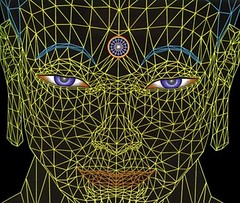The latest Sentient Developments podcast is now available.
Feed: http://feeds.feedburner.com/PodcastSentDev
Tags: Podcast, Audiocast, Transhumanism, Emerging Technology, Futurism, utopia, seti, quantum communication, disaster prevention, environmentalism, gaianism.
January 31, 2006
January 30, 2006
BBC: analytic couples produce autistic children
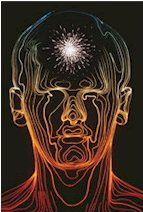 The BBC is reporting on a report by Simon Baron-Cohen who claims that analytical couples, namely scientific types, may be more likely to produce children with autism.
The BBC is reporting on a report by Simon Baron-Cohen who claims that analytical couples, namely scientific types, may be more likely to produce children with autism.Baron-Cohen, a prof at the University of Cambridge, said the phenomenon might help explain the recent rise in diagnoses.
This is similar to the claim made by Steve Silberman in Wired a few years ago in his article The Geek Syndrome in which he argued that the high prevalency of Asperger's Syndrome (a high-funtioning form of autism) in Silicon Valley was due to the pairing off of couples with "tech" and "math" genes.
Baron-Cohen labels people such as scientists, mathematicians and engineers as "systemizers" (ie. people skilled at analysing systems). He argues that systemizers are often attracted to each other - and thus more likely to pass "autism" genes to their offspring. On a related note, other researchers have found that both mothers and fathers of children with autism score highly on a questionnaire measuring autistic traits.
This shouldn't really come as a surprise; it's simple genetics. What he's really saying is that nerds give birth to more nerds. What's unique, I suppose, is that in today's society more systemizers are able to hook-up with other sytemizers. Revenge of the nerds, I guess (check out my column on that exact topic: "Once outcasts, some autistics now see their condition as a cognitive gift and even the next stage in human evolution—at the dawn of the transhuman age, who's to say they're wrong?".
Tags: neuroscience, autism, asperger syndrome, genetics.
People are eating better -- just ask Kraft
 Kraft Foods -- the largest U.S. food manufacturer and the maker of Kraft cheese, Nabisco crackers, Oscar Mayer meats and Post cereals -- announced today that it would eliminate 8,000 jobs, or about 8% of its work force, and close up to 20 production plants as it broadens an ongoing restructuring effort.
Kraft Foods -- the largest U.S. food manufacturer and the maker of Kraft cheese, Nabisco crackers, Oscar Mayer meats and Post cereals -- announced today that it would eliminate 8,000 jobs, or about 8% of its work force, and close up to 20 production plants as it broadens an ongoing restructuring effort.This restructuring comes less than 2 years after their most recent shake-up when in 2004 there had just been a re-jigging of top management that followed more than a year of disappointing sales and earnings. At the time, Kraft executives blamed the poor results on "American consumers' increased health concerns, which had put the entire packaged food industry under severe pressure to change quickly."
Yes, obesity and other food issues are a problem in N. America, but I have to think that people are starting to get the message about healthy eating and the importance of avoiding processed foods.
Tags: health.
The malevolence and gross negligence of the Bush Administration
 NYT: Climate Expert Says NASA Tried to Silence Him:
NYT: Climate Expert Says NASA Tried to Silence Him:The top climate scientist at NASA says the Bush administration has tried to stop him from speaking out since he gave a lecture last month calling for prompt reductions in emissions of greenhouse gases linked to global warming.And in other news re: global warming:
The scientist, James E. Hansen, longtime director of the agency's Goddard Institute for Space Studies, said in an interview that officials at NASA headquarters had ordered the public affairs staff to review his coming lectures, papers, postings on the Goddard Web site and requests for interviews from journalists.
BBC: Stark warning over climate change -- Rising concentrations of greenhouse gases may have more serious impacts than previously believed, a major scientific report has said.
Tags: global warming, environmentalism.
Guardian: There is no stop button in the race for human re-engineering
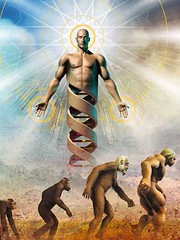 Madeleine Bunting has written a piece for the Guardian in which she describes the inexorable tendency towards transhumanism.
Madeleine Bunting has written a piece for the Guardian in which she describes the inexorable tendency towards transhumanism.Bunting notes how transhumanists believe that humanity is on the point of being liberated from its biology. "In their advocacy of our 'technological rights'," she says, "they believe that human beings are on the brink of a huge leap in development, leaving behind the sick, quarrelsome, weak, fallible creatures we have been up to now. We will be, as their slogan goes, 'better than well'."
She feels that North America has had a head start in the human enhancement debate and that Europeans need to get their heads around the issues soon so that they can influence what technologies are developed, rather than leaving it to the scientists and the pharmaceutical and military interests who sponsors research into human enhancement.
Much of the research that could be ultimately used for human enhancement, she argues, is urgently needed to counter such neuro-degenerative diseases as Alzheimer's. Consequently, Bunting writes with cautious optimism and concern, but also with a reserved sense of defeat. Transhumanism is coming, she argues, whether we like it or not -- so we'd better start managing the process now.
At the same time, however, she says it's possible to "envisage how fast, in a competitive, unequal world, we could hurtle towards some horrible futures."
Ultimately, however, Bunting believes that there's no point in sci-fi style panic. "The best hope lies in the strength and quality of public debate and democratic institutions to regulate and direct the use of these powerful technologies," she says.
Tags: health technology, transhumanism, futurism, human enhancement.
January 27, 2006
Omega-3
 RAND Study Finds No Link Between Consuming Omega-3 Fatty Acids and Lower Incidence of Cancer: Consuming food or dietary supplements such as fish oil that contain omega-3 fatty acids provides no protection against developing cancer, according to a RAND Corporation study published today in the Journal of the American Medical Association.
RAND Study Finds No Link Between Consuming Omega-3 Fatty Acids and Lower Incidence of Cancer: Consuming food or dietary supplements such as fish oil that contain omega-3 fatty acids provides no protection against developing cancer, according to a RAND Corporation study published today in the Journal of the American Medical Association.The omega point: The Economist reports on how omega-3 fatty acids are a crucial component of a healthy diet—particularly, it seems, for pregnant women wanting bright, sociable children. The article also notes how omega-3's may also help men who have a difficult time controlling their anger.
And Wikipedia says that: Many studies have supported the health benefits of increasing omega-3 fatty acids in diets deficient in this nutrient; these studies have also provided information as to the detrimental effects of an omega-3 deficient diet. Many studies have shown that high doses of omega-3 can treat bipolar disorder and depression, while other research has shown a better benefit at a lower doses and no benefit, and even worsening of the symptoms at higher doses. Some have explained those surprising results by the hypothesis that higher doses deplete and create a deficiency of Omega 6, which is also essential for the conditions which are believed to be treated with Omega 3. In those same studies, doses between 1 to 2 grams for psychiatric conditions were optimal. The researchers believe that omega-3 fatty acids have shown great results in treating those disorders, and if approved, it could be a better drug (fewer side effects) than others such as lithium carbonate. Limited research also suggests that omega-3 is useful for treatment of borderline personality disorder and migraine. Non-topical use of certain omega-3 fatty acids has been shown to be useful for treating and healing distressed skin (eczema, psoriasis).
On September 8, 2004, the U.S. Food and Drug Administration gave "qualified health claim" status to eicosapentaenoic acid (EPA) and docosahexaenoic acid (DHA) omega-3 fatty acids, stating that "supportive but not conclusive research shows that consumption of EPA and DHA omega-3 fatty acids may reduce the risk of coronary heart disease."
Tags: omega-3, health.
January 26, 2006
Mikko Rauhala is unarmed, dangerous and transhumanist
 Six Degrees, a Finnish magazine that publishes in the English language, has interviewed activist Mikko Rauhala, a Finnish transhumanist, vegan, and most recently, anti-copyright law agitator.
Six Degrees, a Finnish magazine that publishes in the English language, has interviewed activist Mikko Rauhala, a Finnish transhumanist, vegan, and most recently, anti-copyright law agitator.Rauhala is a systems administrator at the University of Helsinki and is a founding member of Electronic Frontier Finland. In 2003 he co-founded the Finnish Transhumanist Association and is currently a member of the Information Society Working Group of the Green Party.
In the Six Degrees interview, Rauhala primarily discusses his work to combat what he sees as unfair practices in copyright law in Finland. He rightfully criticizes the stifling nature of copyright laws, which threatens to significantly constrain how end users can enjoy and use various forms of media. “[I]n this century,” he says, “we have seen both the absurd lengthening of the period of copyright at the behest of large corporations but also the runaway strengthening of the powers it gives to its wielders, who are in quite a real way monopolising our culture.”
Rauhala, like many transhumanists, holds libertarian-like values. In regards to state control, he argues that “[s]ome like to sell the idea that freedom is inherent in our Western capitalist society, but totalitarianism is not fundamentally a matter of left or right politics. There is a strong trend in Western societies today to reduce freedom and civil rights. We’re sliding towards more state control and more privileges for large corporations, who wield considerable political power.”
On this point I can't help but agree with Rauhala; today's corporatist world shares many of the totalitarian tendencies seen on the extreme left and right, particularly as it pertains to overwhelming political influence, media, culture, memetic dominance, and the perpetuation of the idea of citizen as consumer.
In regards to his transhumanist views, Rauhala encapsulates the movement quite well:
“The core of transhumanism lies basically in secular humanism, but with emphasis on the self-directed improvement of humanity. The common notion of some things being ‘natural’ and others ‘unnatural’ is cast aside. Transhumanism doesn’t apply any arbitrary limits to the methods that can be used to improve the human condition, or to the extent of the improvement. It’s basically that simple.For those interested in transhumanism and its ties to Finland, be sure to check out TransVision06 which will be held at the University of Helsinki from August 17-19, 2006.
For example, if you ask whether people should be able to live longer productive lives, the answer would probably be yes. But if you talk about living to be, say, a thousand years old, many people hesitate and consider it unnatural. In transhumanist circles talking about living to be a thousand is almost conservative. Of course, life extension is just an example. Transhumanism advocates that people should generally be able to become more the people they want to be. Increased intelligence is often seen as central in this respect. The world has its share of difficult problems, and we need all the smart brains that we can get.”
Tags: activism, copyright law, transhumanism.
ABC reports on cryonics bound couple
 ABC has a little report on a couple who has recently signed up for cryonic suspension with Alcor Life Extension Foundation.
ABC has a little report on a couple who has recently signed up for cryonic suspension with Alcor Life Extension Foundation.Typical of the media, ABC gets their terminology wrong, mistakenly referring to the procedure as cryogenics (which is a branch of physics that studies low temperatures). Rather, it's cryonics in which people are frozen in hopes of being reanimated in the future.
Anyway, the couple, David and Trudi Pizer, want to be frozen along with their dogs at Alcor. "I want to be with [my wife] forever, I mean it," says David, but "I would rather take an anti-aging pill than have to do this." Sounds like David has a case of the pre-vitrification jitters.
The ABC article also has a video of the couple being interviewed.
However, as I read the article, I couldn't help but feel that ABC was covering it from the "freak-show" perspective. You know, it was time for the 'lighter' side of the news. I wonder how long it will take before the cryonics option is socially normalized.
Tags: cryonics, alcor, radical life extension, transhumanism.
January 25, 2006
Change is good
I've changed my blog template (again). I got tired of working with such a dark site. I think this works a bit better and I hope you like it.
Zimmer: Return of the puppet masters
 Carl Zimmer of Corante has written a piece about mind viruses. No, not memes -- real, biological parasites that may be altering emotional subjectivity in humans.
Carl Zimmer of Corante has written a piece about mind viruses. No, not memes -- real, biological parasites that may be altering emotional subjectivity in humans.Specifically, Zimmer is referring to Toxoplasma gondii, a single-celled parasite that lives in the stomachs of cats, sheddding eggs that can be picked up by rats and other animals that can just so happen be eaten by cats. This parasite forms cysts throughout its intermediate host's body, including the brain.
What's scary, however, is what it does to the host's brain: scientists believe that Toxoplasma changes the personality of its human hosts, bringing different shifts to men and women.
Parasitologist Jaroslav Flegr of Charles University in Prague administered psychological questionnaires to people infected with Toxoplasma and controls. Those infected, writes Zimmer, show a small, but statistically significant, tendency to be more self-reproaching and insecure. Paradoxically, infected women, on average, tend to be more outgoing and warmhearted than controls, while infected men tend to be more jealous and suspicious.
Yikes.
As Zimmer notes, it's disturbing to think that parasites are tinkering with humanity's personality -- perhaps even giving rise to cultural and sexual diversity.
Tags: neuroscience, philosophy of mind, consciousness, toxoplasma gondii, parasites
Buddha on the Brain
"As much as the Dalai Lama enjoys dabbling in science, he has a greater purpose: to alleviate suffering. Buddhism has an extensive toolkit of techniques intended to reduce misery and perfect humanity through quieting the mind and cultivating compassion. The Dalai Lama wants to extract these methods from their religious context and ground them in the science of the brain in the hope that they will be widely adopted."Wired explores the Dalai Lama's recent participation at the Society for Neuroscience's annual meeting: Buddah on the Brain.
Tags: Buddhism, Neuroscience, Science and Religion.
Bostrom's letter from utopia
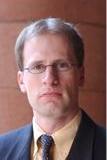 Transhumanist Nick Bostrom has penned a Letter From Utopia. The letter is written from the perspective of a potential future self who hopes that they will be realized in actuality. "I am one of your possible futures," writes the posthuman self, "If all goes well, you will one day become me. If that does happen, then I am not only a possible future of yours but your actual future. In that case, I am a coming phase of you."
Transhumanist Nick Bostrom has penned a Letter From Utopia. The letter is written from the perspective of a potential future self who hopes that they will be realized in actuality. "I am one of your possible futures," writes the posthuman self, "If all goes well, you will one day become me. If that does happen, then I am not only a possible future of yours but your actual future. In that case, I am a coming phase of you."He writes that there are three fundamental transformations that describes the journey from humanity to posthumanity:
- Transformation one: Extend your healthy lifespan
- Transformation two: Boost your cognitive capacities
- Transformation three: Elevate your emotional well-being
Bostrom argues that nothing in the laws of nature indicate that posthuman forms and utopian society are impossible. The trick, he says, is to get from here to there without "burning our wings."

I am concerned that the pursuit of utopia could bring out the worst in you. Please take my message in the right spirit. Many a moth has been incinerated in pursuit of a brighter future. Seek the light! But approach with care, and change course if you smell your wingtips burning. Light is for seeing, not dying.Ultimately, the letter from the future conveys a future that we cannot begin to fathom:
You could say I am happy, that I feel good. You could say that I feel surpassing bliss. But these words are used to describe human experience. What I feel is as far beyond ordinary human feelings as my thoughts are beyond human thoughts. I wish I could show you what I have in mind. If only I could share one second of my conscious life with you! But that is impossible. Your container could not hold even a small splash of my joy, it is that great.Tags: utopia, predictions, transhumanism, technological singularity.
The Web: a new mind for an old species
 Back in August of 2005, Kevin Kelly wrote a highly detailed and fascinating account of the World Wide Web for Wired. Titled We Are the Web, Kelly reviews the history of the Web -- including its early conceivers (Vannevar Bush wanted hyperlinked pages in 1945!) and its naysayers. He also describes its present manifestation and predicts its potential form in 2015.
Back in August of 2005, Kevin Kelly wrote a highly detailed and fascinating account of the World Wide Web for Wired. Titled We Are the Web, Kelly reviews the history of the Web -- including its early conceivers (Vannevar Bush wanted hyperlinked pages in 1945!) and its naysayers. He also describes its present manifestation and predicts its potential form in 2015.Kelly's main thrust in the article is that we shouldn't under-estimate where the Web will be in 10 years. Massive parallel processing, he argues, is made possible by the Web. Consequently, in 10 years, the entire Web "system" will contain "hundreds of millions of miles of fiber-optic neurons linking the billions of ant-smart chips embedded into manufactured products, buried in environmental sensors, staring out from satellite cameras, guiding cars, and saturating our world with enough complexity to begin to learn. We will live inside this thing." It's conceivable that the first real attempts at creating AI will happen in this environment rather than massive supercomputers.
By 2015, he says, it will anticipate disturbances and avoid them, while having "a robust immune system, weeding spam from its trunk lines, eliminating viruses and denial-of-service attacks the moment they are launched, and dissuading malefactors from injuring it again."
He calls it the "Anticipation Machine."
Ultimately, as the Web becomes more brain-like, it will be a near-literal extension of our own minds. "What will most surprise us is how dependent we will be on what the Machine knows - about us and about what we want to know," writes Kelly. "We already find it easier to Google something a second or third time rather than remember it ourselves. The more we teach this megacomputer, the more it will assume responsibility for our knowing. It will become our memory. Then it will become our identity. In 2015 many people, when divorced from the Machine, won't feel like themselves - as if they'd had a lobotomy."
Tags: internet, predictions, transhumanism, technological singularity.
January 23, 2006
James Lovelock's Gaian despair
 James Lovelock, an independent scientist, author, researcher and environmentalist, has written an OpEd for the Independent Online that is receiving a fair amount of attention. Most famous for proposing and popularizing the Gaia hypothesis (the idea that the Earth functions as a kind of superorganism), Lovelock contends that the Earth's symptoms are pointing to the blatantly obvious fact that our planet is very, very sick.
James Lovelock, an independent scientist, author, researcher and environmentalist, has written an OpEd for the Independent Online that is receiving a fair amount of attention. Most famous for proposing and popularizing the Gaia hypothesis (the idea that the Earth functions as a kind of superorganism), Lovelock contends that the Earth's symptoms are pointing to the blatantly obvious fact that our planet is very, very sick.Lovelock doesn't mince words in this article; he says we're in deep trouble.
"The Earth's physical condition," he argues, will "soon to pass into a morbid fever that may last as long as 100,000 years." Lovelock says that humanity and its civilization is in "grave danger" and that before this century is over billions will die and the "few breeding pairs of people that survive will be in the Arctic where the climate remains tolerable."
Lovelock is fairly certain that we've passed the point of no return and that the only thing to do now is to maximize the time we have left before extinction. "We have to keep in mind the awesome pace of change and realise how little time is left to act," he says, "and then each community and nation must find the best use of the resources they have to sustain civilisation for as long as they can. Civilisation is energy-intensive and we cannot turn it off without crashing, so we need the security of a powered descent."
In other words, he argues that we need to slowly turn back the technological clocks in hopes of reverting to a state of being with the Earth that's more amenable to symbiosis rather than parasitism.
Throughout the article it's clear that Lovelock lives and breathes Gaianism. He speaks of the Earth in a flowerly and quasi-religious tone. "If we chose to be the stewards of the Earth," he writes, "then we are responsible for keeping the atmosphere, the ocean and the land surface right for life. A task we would soon find impossible - and something before we treated Gaia so badly, she had freely done for us."
While I realize that part of his choice of language is meant for literary effect, he does comes across as being a fair bit over the top. Compounded by his pessimistic tone, he doesn't endear himself to his readers.
But perhaps that's the point. There's a part of me that believes the planet is now officially fucked and that we've entered into the opening salvo of a runaway greenhouse effect (ie similar to the effect as it occurs on Venus where the interaction of the greenhouse effect with other processes results in feedback cycles). If that's the truth -- and certainly that's how Lovelock perceives it -- then it really needs to get out now matter how much it hurts to hear it.
However, I do take exception to his idea that a) humanity cannot get over the complexity issue in regards to managing the environment, and that b) Luddism is the only recourse left to us.
First, over-complexity as an excuse is never satisfying, and in this day in age in which Moore's law still very much in effect, and with molecular assembling nanotechnology and SAI on the horizon, all bets are off in terms of what we can or cannot do as "stewards" of this planet.
Secondly, Luddism is another way of saying, "abandon all hope ye who enter here." While continuing to progress technologically may result in our eventual extinction, Luddism will almost guarantee our eventual extinction. A primitive civilization still requires energy and resources, and with no hope of technological progression, a civilization will eventually wither away. Like any system that requires energy, Earth is heading toward an entropy point. Consequently, Luddism is a dead-end street that would leave humans consistently helpless to environmental stressors and easy prey to catastrophes like NEO impacts.
As biologist Rene Dubois once said, "despair is a sin." Moreover, it's caused by sheer lack of imagination. Quick glances at World Changing, the Viridian design movement, and burgeoning environmental technology disciplines show that there is still a lot of vigor and hope in making this planet work for us and vice-versa.
Rather than despair and permanently pull the plug on human civilization and progress, we need to better develop our minds and tools to help us manage our super-organism planet before it's truly too late. We have passed a point of no return of sorts; there's no going back to the Stone Age. We have no choice but to make our technologies work for us now if there to be any hope for our survival into the 21st century and beyond.
Tags: global warming, gaia theory, existential risks, disasters, disaster prevention, environmentalism.
January 20, 2006
David Deutsch has revamped his website
 Quantum physicist David Deutsch has finally updated his Website. He's doing a bit of blogging now and has some links to his articles. Deutsch pioneered the field of quantum computers and is a proponent of the many-worlds interpretation of quantum mechanics.
Quantum physicist David Deutsch has finally updated his Website. He's doing a bit of blogging now and has some links to his articles. Deutsch pioneered the field of quantum computers and is a proponent of the many-worlds interpretation of quantum mechanics.Tags: quantum physics, david deutsch.
Quantum communication and SETI
It's conceivable that radio signals may not be the preferred form of communication for ETI's. Rather, quantum communication may be where it's at for linking up interstellar chat rooms.
There may be a number of reasons for this.
First, radio signals betray location. For those civs who are paranoid enough, or for those who don't want to "shout in the jungle," the anonymity of quantum communication may be desirable.
Second, it may be a more elegant and advanced form of instantaneous communication that takes non-locality into account.
Consequently, SETI may be barking up the wrong tree by listening for radio signals. At some point, when our quantum communication technology matures (see Quantum Communication Moves Into the Unknown by Deutsch and Ekert), perhaps we'll know how to listen for ET's signal.
Fore more, read Seth Shostak's article from 2003.
Tags: Fermi Paradox, Life on Other Planets, Astrobiology, SETI, quantum communication.
There may be a number of reasons for this.
First, radio signals betray location. For those civs who are paranoid enough, or for those who don't want to "shout in the jungle," the anonymity of quantum communication may be desirable.
Second, it may be a more elegant and advanced form of instantaneous communication that takes non-locality into account.
Consequently, SETI may be barking up the wrong tree by listening for radio signals. At some point, when our quantum communication technology matures (see Quantum Communication Moves Into the Unknown by Deutsch and Ekert), perhaps we'll know how to listen for ET's signal.
Fore more, read Seth Shostak's article from 2003.
Tags: Fermi Paradox, Life on Other Planets, Astrobiology, SETI, quantum communication.
January 19, 2006
Stephen Batchelor's Agnostic Buddhism
 Stephen Batchelor is a Buddhist scholar and philosopher who has promoted the idea of an agnostic or existential Buddhism in favour of the heavily metaphysical and ritualized forms of Buddhism that characterize much of Buddhism today.
Stephen Batchelor is a Buddhist scholar and philosopher who has promoted the idea of an agnostic or existential Buddhism in favour of the heavily metaphysical and ritualized forms of Buddhism that characterize much of Buddhism today.He is a controversial figure among many Buddhists, mainly because he has divorced the concepts of karma and reincarnation from the dharma claiming that they are not overly necessary concepts on the path to personal self-discovery and in how we create authentic relationships with others.
In this, Batchelor is not too far removed from the current Dalai Lama who has surprised many with his liberal and modern approach to Buddhism. The Dalai Lama dismisses traditional Buddhist cosmology as invalidated by science, and questions the need for belief in rebirth (while stating that ultimately meditation will lead to conviction about it).
Batchelor has also championed not only Buddhism in the West, but a practical Buddhism that relates to modern life. He recognizes that today's socio-economic realities mean that not everyone can shave their heads, put on a robe, and meditate in a temple for the rest of their lives (he also argues that a purely monastic Buddhism is not good for Buddhism in general). Batchelor, who disrobed more than 20 years ago, practices what he preaches and now lives the lay life in France.
Batchelor believes that a practical and real Buddhist approach to life is possible today in the West. He says we should strive for contentment, selflessness, and a rejection of all forms of attachment while maintaining a strong enough ego to achieve these things and continue along the path of self-discovery.
I recently took a look at Batchelor's homepage and discovered that it's full of excellent articles. Every one is a little gem worth exploring. For insights into Buddhism today and the Dalai Lama, I recommend The Future is in Our Hands.
If you're interested in his books, check out:
Alone With Others: An Existential Approach to Buddhism
Buddhism Without Beliefs: A Contemporary Guide to Awakening
Tags: Buddhism, Stephen Batchelor, Science and Religion.
January 18, 2006
New podcast available
The latest Sentient Developments podcast is now available.
Feed: http://feeds.feedburner.com/PodcastSentDev
Tags: Podcast, Audiocast, Transhumanism, Emerging Technology, Futurism, blindsight, seti, bioterrorism, disaster prevention.
Feed: http://feeds.feedburner.com/PodcastSentDev
Tags: Podcast, Audiocast, Transhumanism, Emerging Technology, Futurism, blindsight, seti, bioterrorism, disaster prevention.
Dalai Lama: The Universe in a Single Atom
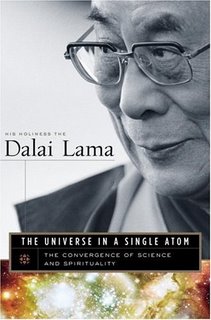 I'm not a huge fan of Tibetan Buddhism (I'm more partial to the existentialist Buddhism of Stephen Batchelor), but this looks very interesting (particularly his opinions re: genetic modification of offspring). But as The Dalai Lama himself once said, "My Tibetan goals are the same as those of Western science: to serve humanity and to make better human beings."
I'm not a huge fan of Tibetan Buddhism (I'm more partial to the existentialist Buddhism of Stephen Batchelor), but this looks very interesting (particularly his opinions re: genetic modification of offspring). But as The Dalai Lama himself once said, "My Tibetan goals are the same as those of Western science: to serve humanity and to make better human beings."The Universe in a Single Atom: The Convergence of Science and Spirituality
by Dalai Lama XIV, Bstan-dzin-rgya-mtsho
Quick Reviews:
From Publishers Weekly
"As the Dalai Lama observes in this wise and humble book, dialogue between scientists and those interested in spirituality is important because science is not neutral; it can be used for good or ill, and we must approach scientific inquiry with compassion and empathy. Similarly, a spirituality that ignores science can quickly become a rigid fundamentalism. Sometimes the Dalai Lama discovers similarities between the two fields. For example, Einstein's idea that time is relative dovetails neatly with Buddhist philosophical understandings of time. Still, His Holiness does not accept all scientific thinking as holy writ: though he is intrigued by scientific stories of origins, like the Big Bang theory, Buddhism holds that the universe is "infinite and beginningless." The penultimate chapter brings ethical considerations to bear on technological advancements in genetics. The Dalai Lama gently suggests that although parents who select certain genetic traits for their children may intend to give their children a leg up, they may in fact simply be capitulating to a social pressure that favors, say, boys over girls or tall people over short. He also cautions that we do not know the long-term consequences of genetically modifying our crops. In fact, it is disappointing that the Dalai Lama devotes only 18 pages to these urgent and complex topics. Perhaps this prolific author has a sequel in the works."
From Booklist
"Fascinated by science since boyhood, the Dalai Lama, unlike fundamentalists who resist scientific realities, has become convinced that a dialogue between religion and science will advance the wisdom of both disciplines and greatly benefit humankind. He explains why in illuminating explications of how Buddhism and science are both predicated on focused observation, reasoning, and the ability to abandon outmoded ideas in the ongoing search for reality. He compares quantum physics with Buddhist philosophy and reveals how the theory of evolution echoes the Buddhist understanding that all of life is interconnected and in flux, and he writes with deep feeling about the pressing ethical questions raised by advancements in biotechnology. For all the provocative and detailed reasoning found in this soulful and mind-expanding book, what emerges most powerfully is the Dalai Lama's belief that science must embrace Buddhism's mission and work toward increasing compassion and alleviating suffering." -- Donna Seaman
Tags: Buddhism, Science and Religion.
The world we live in...
 We now live in a world with glow in the dark pigs, cyborg insects, and where anyone can make their own vintage Star Trek episode.
We now live in a world with glow in the dark pigs, cyborg insects, and where anyone can make their own vintage Star Trek episode.And we may soon live in a world with rabbit-human chimeras, cars that can go 330 miles on a single gallon of gas, robocops, and alien worship cults who hope to produce clones with discredited Korean scientists.
Kurzweil: The Singularity is coming, the Singularity is coming!

[via BoingBoing] Kevin Kelly takes a look at Ray Kurzweil's latest book, The Singularity is Near: When Humans Transcend Biology
This book offers three things that will make it a seminal document. 1) It brokers a new idea, not widely known. 2) The idea is about as big as you can get: the Singularity -- all the change in the last millions years will be superseded by the change in the next five minutes, and 3) It is an idea that demands informed response. The book's claims are so footnoted, documented, graphed, argued, and plausible in small detail, that it requires the equal in response. Yet its claims are so outrageous that if true, it would mean... well ... the end of the world as we know it, and the beginning of Utopia. Ray Kurzweil has taken all the strands of the Singularity meme circulating in the last decades and has united them into a single tome which he has nailed on our front door. I suspect this will be one of the most cited books of the decade. Like Paul Erlich's upsetting 1972 book Population Bomb, fan or foe, it's the wave at epicenter you have to start with.Quick review from Publisher's Weekly:
Starred Review. Renowned inventor Kurzweil (The Age of Spiritual Machines) may be technology's most credibly hyperbolic optimist. Elsewhere he has argued that eliminating fat intake can prevent cancer; here, his quarry is the future of consciousness and intelligence. Humankind, it runs, is at the threshold of an epoch ("the singularity," a reference to the theoretical limitlessness of exponential expansion) that will see the merging of our biology with the staggering achievements of "GNR" (genetics, nanotechnology and robotics) to create a species of unrecognizably high intelligence, durability, comprehension, memory and so on. The word "unrecognizable" is not chosen lightly: wherever this is heading, it won't look like us. Kurzweil's argument is necessarily twofold: it's not enough to argue that there are virtually no constraints on our capacity; he must also convince readers that such developments are desirable. In essence, he conflates the wholesale transformation of the species with "immortality," for which read a repeal of human limit. In less capable hands, this phantasmagoria of speculative extrapolation, which incorporates a bewildering variety of charts, quotations, playful Socratic dialogues and sidebars, would be easier to dismiss. But Kurzweil is a true scientist—a large-minded one at that—and gives due space both to "the panoply of existential risks" as he sees them and the many presumed lines of attack others might bring to bear. What's arresting isn't the degree to which Kurzweil's heady and bracing vision fails to convince—given the scope of his projections, that's inevitable—but the degree to which it seems downright plausible.Tags: technological singularity, ray kurzweil, transhumanism.
Podcast: Cozying Up With Deep Blue
I've posted a podcast of my column, Cozying Up With Deep Blue: "Advanced Chess" pitting computer-human teams against each other shows how humans can avoid obsolescence through symbiotic relationships with technology.
The podcast feed can be accessed at:
http://feeds.feedburner.com/PodcastSentDev
Tags: Podcast, Audiocast, Artificial Intelligence, Chess, Transhumanism, Emerging Technology, Futurism.
The podcast feed can be accessed at:
http://feeds.feedburner.com/PodcastSentDev
Tags: Podcast, Audiocast, Artificial Intelligence, Chess, Transhumanism, Emerging Technology, Futurism.
January 17, 2006
SETI: Transmitting to a Million Worlds
SETI's Seth Shostak has written a new piece for Space dealing with the perennial concern of us having a snowball's chance in hell of picking up ET's signal given the vastness of space.
We've all heard the argument: the probability that our receiving antennas are pointed at ET's world just when their transmitting antennas are aimed at ours is vanishingly small; we’ll never arrange our telescopes to the right direction, at the right time, to pick up a signal.
Shostak is a pretty interesting guy, even if he is a contact optimist, and he provides a rather clever 'solution' to this problem.
He argues that advanced ETI's would know to transmit signals to the habitable zones of the Galaxy and that Earth is likely receiving signals as we speak. Specifically, ETI's might use a highly directional antenna (maybe an array) to beam a short, intense pulse to a long list of bio-worlds. They repeat this serial signaling project every 20 minutes, for example. If each pulse is one-thousandth of a second long, their list will comprise about a million targets, enough to provide a decent chance for including at least one star system sporting intelligent life. That’s what Shostak calls the "hailing" signal -- the one whose only purpose is to get someone’s attention.
Consequently, if an intelligence were to hear the hailing signal, they would scramble to build a a large enough receiver to pick up more complex messages from that exact spot in the cosmos. Shostak believes that it would be a relatively low-power (and therefore affordable) omnidirectional transmitter that provides the message.
As a result, argues Shostak, SETI needs to extend their "dwell" time on each target from a few minutes to a few tens of minutes, while changing their SETI receivers to more easily recognize short radio bursts.
Go, SETI!
Tags: Fermi Paradox, Life on Other Planets, Astrobiology, SETI.
We've all heard the argument: the probability that our receiving antennas are pointed at ET's world just when their transmitting antennas are aimed at ours is vanishingly small; we’ll never arrange our telescopes to the right direction, at the right time, to pick up a signal.
Shostak is a pretty interesting guy, even if he is a contact optimist, and he provides a rather clever 'solution' to this problem.
He argues that advanced ETI's would know to transmit signals to the habitable zones of the Galaxy and that Earth is likely receiving signals as we speak. Specifically, ETI's might use a highly directional antenna (maybe an array) to beam a short, intense pulse to a long list of bio-worlds. They repeat this serial signaling project every 20 minutes, for example. If each pulse is one-thousandth of a second long, their list will comprise about a million targets, enough to provide a decent chance for including at least one star system sporting intelligent life. That’s what Shostak calls the "hailing" signal -- the one whose only purpose is to get someone’s attention.
Consequently, if an intelligence were to hear the hailing signal, they would scramble to build a a large enough receiver to pick up more complex messages from that exact spot in the cosmos. Shostak believes that it would be a relatively low-power (and therefore affordable) omnidirectional transmitter that provides the message.
As a result, argues Shostak, SETI needs to extend their "dwell" time on each target from a few minutes to a few tens of minutes, while changing their SETI receivers to more easily recognize short radio bursts.
Go, SETI!
Tags: Fermi Paradox, Life on Other Planets, Astrobiology, SETI.
Blindsight and our unconscious life
 The human mind, according to neuroscientist Marvin Minsky, in all its complexity can be built up, layer by layer, from the interactions of agents, or functional subroutines.
The human mind, according to neuroscientist Marvin Minsky, in all its complexity can be built up, layer by layer, from the interactions of agents, or functional subroutines. This so-called 'society of mind' theory views the human mind and all other naturally evolved cognitive systems as a vast society of individually simple processes known as agents. These processes are the fundamental thinking entities from which minds are built, and together produce the many abilities we attribute to minds. The great power in viewing a mind as a society of agents, as opposed to as the consequence of some basic principle or some simple formal system, is that different agents can be based on different types of processes with different purposes.
It's been said that consciousness is merely the front-end of our brain that gives cohesion to all the processing that's done in the background. It it weren't this way, it would be impossible for us to retain a unitary sense of self and a firm grasp on reality.
In other words, there's a whole lot happening in our noggins that we're utterly oblivious to -- sort of what Freud referred to as the subconscious or unconscious mind, but it's a lot more complicated than that. Consciousness is more like an orchestra conductor that's unifying the society of mind that exists in the brain's various functions.
As proof -- that consciousness provides us with a limited window into the brain's workings -- there is a bizarre phenomenon known as blindsight that beautifully illustrates this.
Blindsight is the condition where some blind people are unconscious of incoming visual stimuli but are nonetheless able to guess with startling accuracy the details of what they're being exposed to.
Visual processing in the brain goes through a series of processing stages. Destruction of the first visual cortical area, the primary visual cortex (or V1), leads to blindness in the part of the visual field that corresponds to damaged cortical representation.
Although individuals with damage to V1 are not consciously aware of stimuli presented in their blind field, scientists showed in the early 1970s that if forced to guess about whether a stimulus is present in their blind field, such as an 'X' or 'O', they do rather better than chance -- upwards of 70% accuracy in some studies which is far above any statistical anomaly.
What's likely happening is that the visual data is being received through the retina and is actually hitting the brain's cortex, but the translation to consciousness is getting garbled and lost. More technically, the residual preformance of people exhibiting blindsight is due to preserved pathways into extrastriate cortex that bypass V1.
As this condition shows, being aware of doing something is distinguishable from doing something, and that areas of the brain underlying the experience of doing at least some things are distinct from those needed to actually do those things.
Tags: blindsight, visual impairment, neuroscience, society of mind, philosophy of mind, consciousness.
January 16, 2006
NEJM: Bioterrorism — Preparing to Fight the Next War
Dr. David A. Relman is warning that we should be taking the threat of bioterrorism and biowarfare more seriously, and that our current failure to do so is because we haven't yet acknowledged what the next 'war' will be like.
In his New England Journal of Medicine article, titled "Bioterrorism — Preparing to Fight the Next War," Relman is essentially saying that we run the risk of preparing for the last war when instead we should be realizing that the next 'conflict' or struggle will be the result of asymmetric threats.
"In devising a robust biodefense strategy," he writes, "a key challenge will be to define the optimal balance between fixed and flexible defenses. The Maginot Line built by the French in the 1930s serves as a symbol of static defenses designed to protect against known threats. Although these elaborate fortifications bought the French some time, the advancing German army maneuvered around them. Similarly, the creation of static defenses can be justified for clear, imminent, and potentially catastrophic biologic threats — including avian influenza virus and prominent drug-resistant bacteria, such as Staphylococcus aureus, as well as anthrax and smallpox."
These ain't your daddy's bioweapons, he argues, with potential threats capable of wreaking intense havok. To this point in history, nature has been the most efective bioterrorist, but in the future, the ability of experimenters to create genetic or molecular diversity not found in the natural world may result in new biologic agents with previously unknown potency. Relman believes that such agents may not survive long in the natural world and could, from an evolutionary standpoint, be dismissed as poorly adapted competitors, but they may prove extremely destructive during their lifespan.
He writes:
Tags: Disaster Prevention, Bioterrorism, Biowarfare, asymmetric warfare, Catastrophe, Existential Risks.
In his New England Journal of Medicine article, titled "Bioterrorism — Preparing to Fight the Next War," Relman is essentially saying that we run the risk of preparing for the last war when instead we should be realizing that the next 'conflict' or struggle will be the result of asymmetric threats.
"In devising a robust biodefense strategy," he writes, "a key challenge will be to define the optimal balance between fixed and flexible defenses. The Maginot Line built by the French in the 1930s serves as a symbol of static defenses designed to protect against known threats. Although these elaborate fortifications bought the French some time, the advancing German army maneuvered around them. Similarly, the creation of static defenses can be justified for clear, imminent, and potentially catastrophic biologic threats — including avian influenza virus and prominent drug-resistant bacteria, such as Staphylococcus aureus, as well as anthrax and smallpox."
These ain't your daddy's bioweapons, he argues, with potential threats capable of wreaking intense havok. To this point in history, nature has been the most efective bioterrorist, but in the future, the ability of experimenters to create genetic or molecular diversity not found in the natural world may result in new biologic agents with previously unknown potency. Relman believes that such agents may not survive long in the natural world and could, from an evolutionary standpoint, be dismissed as poorly adapted competitors, but they may prove extremely destructive during their lifespan.
He writes:
[We should not presume] on the basis of history, that when biologic agents are used deliberately and maliciously, they are capable of causing only relatively limited harm. The large biologic-weapons programs of the late 20th century were never unleashed. And the use of such weapons by smaller groups, such as the Aum Shinrikyo cult, has been relatively unsophisticated — far from representative of what moderately well informed groups might do today. The consequences would have been far more dire, for example, had the anthrax spores circulated in the U.S. mail in 2001 been disseminated by more effective routes. Tomorrow's science and technology will present a new landscape with features that are both worrisome and reassuring: the methods and reagents used for reverse-engineering a novel virus, for instance, can also be used to engineer a vaccine against it.Relman's advice? He lists a number of starting points, including the strengthening the public health infrastructure [hear, hear], especially in terms of personnel, communications, and surge capacity. Scientists and clinicians, he asserts, will need to play a bigger role in biodefense planning, including the articulation of needs, policymaking, and the assessment of future threats. These measure would assist in early intervention followed by proactive counter-measures.
Tags: Disaster Prevention, Bioterrorism, Biowarfare, asymmetric warfare, Catastrophe, Existential Risks.
January 15, 2006
Sentient Developments is now podcasting!
Yes, I am now podcasting. Be sure to bookmark and check my feed for regular updates. My feed URL is:
http://feeds.feedburner.com/PodcastSentDev
Tags: Podcast.
http://feeds.feedburner.com/PodcastSentDev
Tags: Podcast.
January 13, 2006
Doomsday seed bank to be built
Norway is going to store the seeds of all known varieties of the world's crops deep in permafrost and inside a mountain on an Arctic island. This "doomsday vault" will be made accessible to all countries and is in anticipation of a potential Earth-wide catastrophe that could wipe out critical crops.
The vault, which will be in the sandstone mountain on Spitsbergen (part of the Svalbard archipelago, about 966km from the North Pole), will be designed to withstand global catastrophes like nuclear war or natural disasters such as non-localized NEO impacts. Permafrost will keep the vault below freezing and the seeds will be protected by metre-thick walls of reinforced concrete, two airlocks and high security blast-proof doors.
Seed collection is being organised by the Global Crop Diversity Trust. "What will go into the cave is a copy of all the material that is currently in collections [spread] all around the world," says Geoff Hawtin of the Trust. There are currently about 1,400 seed banks around the world, but a large number of these are located in countries that are either politically unstable or who face threats from the natural environment. "What we're trying to do is build a back-up to these," says Hawtin, "so that a sample of all the material in these gene banks can be kept in the gene bank in Spitsbergen."
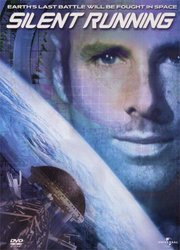 As a macabre aside, this sounds suspiciously like what could be a precursor to space-based gene-banks when life on Earth is no longer sustainable.
As a macabre aside, this sounds suspiciously like what could be a precursor to space-based gene-banks when life on Earth is no longer sustainable.
Such a scenario was depicted in the 1971 film Silent Running. The movie depicts a dystopian future, in which all plant life on Earth is extinct and only a few specimens have been preserved in greenhouse-like domes attached to a fleet of eight American Airlines "space freighters" positioned just outside of the orbit of Saturn.
Of course, now that we can create seed banks and store genetic information, the idea of space-based greenhouses seems like a rather quaint idea.
I wonder, should we send our seeds/genetic info deep into space in hopes that ETIs find them? Hell, if we can't use them in the future either because we're extinct or the planet is uninhabitable, then at least somebody should get use of our diverse genetic heritage. Otherwise, what a waste that would be -- valuable genetic data that took billions of years to evolve by trial and error.
Or here's a better idea: create a permanent space-based probe that perpetually broadcasts digitally encoded genetic information into space. The probe would be a veritable life spreader should an ETI get a hold and make sense of the info. Of course, post-Singularity intelligences may not have much use for plant genomes....
But I have to wonder, what would they think of marijuana?
Tags: Disasters, Gene Banks, Catastrophe, Existential Risks.
The vault, which will be in the sandstone mountain on Spitsbergen (part of the Svalbard archipelago, about 966km from the North Pole), will be designed to withstand global catastrophes like nuclear war or natural disasters such as non-localized NEO impacts. Permafrost will keep the vault below freezing and the seeds will be protected by metre-thick walls of reinforced concrete, two airlocks and high security blast-proof doors.
Seed collection is being organised by the Global Crop Diversity Trust. "What will go into the cave is a copy of all the material that is currently in collections [spread] all around the world," says Geoff Hawtin of the Trust. There are currently about 1,400 seed banks around the world, but a large number of these are located in countries that are either politically unstable or who face threats from the natural environment. "What we're trying to do is build a back-up to these," says Hawtin, "so that a sample of all the material in these gene banks can be kept in the gene bank in Spitsbergen."
 As a macabre aside, this sounds suspiciously like what could be a precursor to space-based gene-banks when life on Earth is no longer sustainable.
As a macabre aside, this sounds suspiciously like what could be a precursor to space-based gene-banks when life on Earth is no longer sustainable.Such a scenario was depicted in the 1971 film Silent Running. The movie depicts a dystopian future, in which all plant life on Earth is extinct and only a few specimens have been preserved in greenhouse-like domes attached to a fleet of eight American Airlines "space freighters" positioned just outside of the orbit of Saturn.
Of course, now that we can create seed banks and store genetic information, the idea of space-based greenhouses seems like a rather quaint idea.
I wonder, should we send our seeds/genetic info deep into space in hopes that ETIs find them? Hell, if we can't use them in the future either because we're extinct or the planet is uninhabitable, then at least somebody should get use of our diverse genetic heritage. Otherwise, what a waste that would be -- valuable genetic data that took billions of years to evolve by trial and error.
Or here's a better idea: create a permanent space-based probe that perpetually broadcasts digitally encoded genetic information into space. The probe would be a veritable life spreader should an ETI get a hold and make sense of the info. Of course, post-Singularity intelligences may not have much use for plant genomes....
But I have to wonder, what would they think of marijuana?
Tags: Disasters, Gene Banks, Catastrophe, Existential Risks.
Economist: Bayes helps explain how the mind works
 The Economist has published an excellent article, Bayes Rules, that beautifully explains not just Bayesian probability reasoning, but how our brains may actually function by using this 'technique.'
The Economist has published an excellent article, Bayes Rules, that beautifully explains not just Bayesian probability reasoning, but how our brains may actually function by using this 'technique.'Bayes' theorem is a result in probability theory, which relates the conditional and marginal probability distributions of random variables. In some interpretations of probability, Bayes' theorem tells how to update or revise beliefs in light of new evidence.
The probability of an event A conditional on another event B is generally different from the probability of B conditional on A. However, there is a definite relationship between the two, and Bayes' theorem is the statement of that relationship. (As a formal theorem, Bayes' theorem is valid in all interpretations of probability. However, frequentist and Bayesian interpretations disagree about the kinds of variables for which the theorem holds.)
If all this means gobbedly gook to you, than I highly recommend the Economist article. It does a fairly decent job of conveying this concept in a way that releates quite well to real life decision making in light in insufficient data.
The key to successful Bayesian reasoning is not in having an extensive, unbiased sample, which is the eternal worry of frequentists, but rather in having an appropriate “prior”, as it is known to the cognoscenti. This prior is an assumption about the way the world works—in essence, a hypothesis about reality—that can be expressed as a mathematical probability distribution of the frequency with which events of a particular magnitude happen.For example, "the participants [in the Bayesian study] were asked about things as diverse as the number of lines in a poem (given how far into the poem a single line is), the time it takes to bake a cake (given how long it has already been in the oven), and the total length of the term that would be served by an American congressman (given how long he has already been in the House of Representatives). All of these things have well-established probability distributions, and all of them, together with three other items on the list—an individual's lifespan given his current age, the run-time of a film, and the amount of time spent on hold in a telephone queuing system—were predicted accurately by the participants from lone pieces of data."
I'm reminded of AI researcher and Singularitarian Eliezer Yudkowsky who has insisted for years that this is how the brain works, and that this is the key to not just understanding our own minds, but that of artificial (super)intelligence as well. For more information, Yudkowsky has written a An Intuitive Explanation of Bayesian Reasoning.
Tags: Bayes Theorem, philosophy of mind, Neurology, Artificial Intelligence.
January 12, 2006
Canadian report: legalize polygamy

“Criminalization does not address the harms associated with valid foreign polygamous marriages and plural unions, in particular the harms to women. The report therefore recommends that this provision be repealed.” -- quoted from a report funded by the federal Justice Department and obtained by The Canadian Press under the Access to Information ActA new study argues that Canada should get rid of its law banning polygamy while changing other legislation to help women and children living in such multiple-spouse relationships.
The research paper is part of a controversial $150,000 polygamy project, launched a year ago and paid for by the Justice Department and Status of Women Canada.
The authors of the report contend that Sec. 293 of the Criminal Code banning polygamy serves no useful purpose and in any case is rarely prosecuted. Instead, the report argues, Canadian laws should be changed to better accommodate the problems of women in polygamous marriages, providing them clearer spousal support and inheritance rights. This would make up for the inconsistent legislation that current exists across the provinces, some of which — Ontario, for example — give limited recognition to foreign polygamous marriages for the purposes of spousal support. Some jurisdictions provide no relief at all.
Chief author Martha Bailey says criminalizing polygamy, typically a marriage involving one man and several wives, serves no good purpose and prosecutions could do damage to the women and children in such relationships. “Why criminalize the behaviour?” she said in an interview. “We don't criminalize adultery."
More
Tags: Polygamy.
SETI to look for ETIs in M Dwarf systems
More than half of the stars in our galaxy are small, dim M dwarfs. Astronomers tend to believe that these stars put out too little light to support life on any planets that orbit them. However, at a recent workshop held at the SETI Institute, a multidisciplinary group of researchers concluded not only that M dwarfs might host habitable planets, but that they might also be good targets in the search for extraterrestrial intelligence.
Personally, I'm a bit skeptical. I'm inclined to invoke the self-sampling assumption and hypothesize that we've got the Goldilocks star: not to hot, not too cold, not too big, not too small -- just right for life and intelligence to ignite and evolve. The type of heat, light, and radiation emitted from M Dwarfs may be just out of the habitable spectrum.
Tags: Fermi Paradox, Life on Other Planets, Astrobiology, Astronomy, SETI.
Personally, I'm a bit skeptical. I'm inclined to invoke the self-sampling assumption and hypothesize that we've got the Goldilocks star: not to hot, not too cold, not too big, not too small -- just right for life and intelligence to ignite and evolve. The type of heat, light, and radiation emitted from M Dwarfs may be just out of the habitable spectrum.
Tags: Fermi Paradox, Life on Other Planets, Astrobiology, Astronomy, SETI.
Temple Grandin: Animals are autistic
 Temple Grandin is an associate professor at Colorado State University and arguably the most accomplished and well-known adult with 'high functioning' autism in the world. Grandin is also a world renowned professional designer of humane livestock facilities.
Temple Grandin is an associate professor at Colorado State University and arguably the most accomplished and well-known adult with 'high functioning' autism in the world. Grandin is also a world renowned professional designer of humane livestock facilities.Grandin became well-known after being described by Oliver Sacks in the title narrative of his book, An Anthropologist On Mars, the title derived from Grandin's description of how she feels around 'neurotypical' people.
In her latest book, Animals in Translation, Grandin attempts to 'use the mysteries of autism to decode animal behaviour.' Some of her ideas:
- redefines consciousness and argues that language is not a requirement for consciousnessScientific American Review:
- categorizes autism as a way station on the road from animals to humans
- explores the "Interpreter" in the normal human brain that filters out detail, creating an unintentional blindness that animals and autistics do not suffer from
- applies the autism theory of "hyper-specificity' to animals, meaning that there is no forest, only trees, trees, and more trees
- argues that the single worst thing you can do to an animal is make it feel afraid
- examines how humans and animals use their emotions, including to predict the future
- compares animals to autistic savants, in fact declaring that animals may be autistic savants, with special forms of genius that normal people cannot see
- explains that most animals have "super-human" skills: animals have animal genius
- reveals the abilities handicapped people, and animals, have that normal people don't
Temple Grandin has been known to crawl through slaughterhouses to get a sense of what the animals there are experiencing. An autistic woman who as a child was recommended for institutionalization, Grandin has managed not only to enter society’s mainstream but ultimately to become prominent in animal research. An associate professor at Colorado State University, she designs facilities used worldwide for humane handling of livestock. She also invented a "hug machine" (based on a cattle-holding chute) that calms autistic children. In Animals in Translation, co-authored with science writer Catherine Johnson, Grandin makes an intriguing argument that, psychologically, animals and autistic people have a great deal in common—and that both have mental abilities typically underestimated by normal people. The book is a valuable, if speculative, contribution to the discussion of both autism and animal intelligence, two subjects on which there is little scientific consensus. Autistics, in Grandin’s view, represent a "way station" between average people, with all their verbal and conceptual abilities, and animals. In touring animal facilities, Grandin often spots details—a rattling chain, say, or a fluttering piece of cloth—that disturb the animals but have been overlooked by the people in charge. She also draws on psychological studies to show how oblivious humans can be to their surroundings. Ordinary humans seem to be less detail-oriented than animals and autistics. Grandin argues that animals have formidable cognitive capabilities, albeit specialized ones, whereas humans are cognitive generalists. Dogs are smell experts, birds are migration specialists, and so on. In her view, some animals have a form of genius—much as autistic savants can perform feats of memory and calculation far beyond the abilities of average people. Some dogs, for example, can predict when their owner is about to have a seizure. Delving into animal emotion, aggression and suffering, Grandin gives tips that may be useful for caretakers of pets and farm animals. She also notes that humans seem to need, and thrive on, the proximity of animals. Indeed, she states provocatively, in the process of becoming human we gave up something primal, and being around animals helps us get a measure of that back.Tags: Autism, Animal Psychology, Animal Rights, Psychology, neurology, Asperger Syndrome.
Dawkins: Beyond belief
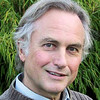 The Guardian speaks to evolutionary biologist Richard Dawkins about his upcoming book, The God Delusion. Excerpt:
The Guardian speaks to evolutionary biologist Richard Dawkins about his upcoming book, The God Delusion. Excerpt: According to memetic theory, memes are subject to the same process of natural selection as genes. And yet one meme, the religious meme, steadfastly refuses to die. You can see where the religious meme sprung from: when the world was an inexplicable and scary place, a belief in the supernatural was both comforting and socially adhesive. But as our understanding of the world grew, you might have expected the religious meme to give way to rationalism. Yet the opposite has happened. Despite overwhelming scientific evidence for the Darwinian explanation of evolution, religious belief - and fundamentalist religion at that - remains as ingrained as ever.Tags: Religion, Atheism, Memetics.
Religion offends every bone in Dawkins's rational, atheist body. "You can see why people may want to believe in something," he acknowledges. "The idea of an afterlife where you can be reunited with loved ones can be immensely consoling - though not to me. But to maintain such a belief in the face of all the evidence to the contrary is truly bewildering." If individual faith is, for Dawkins, an expression of an ignorance, collective faith and organised religion embody something much more pernicious. That is what drove him to make two films for Channel 4, the first of which was shown last night, and to write his new book, The God Delusion, to be published in September.
Dawkins describes these projects as "consciousness-raising exercises" but the films come across as full-frontal assaults. Protestantism, Catholicism, Judaism and Islam all get both barrels. Powerful and well-argued, they are; subtle, they ain't. Richard Harries, Bishop of Oxford, gets a walk-on role as the liberal voice of religion, but mostly it's the fundamentalists of all faiths who fall under Dawkins's scrutiny. "They are profoundly wrong," he says, "but in some ways I have more sympathy with their views than I do with the so-called more liberal wings. At least the fundamentalists haven't tried to dilute their message. Their faith is exposed for what it is for all to see."
“abusing popular credulity”
 An Italian judge has ordered a priest to appear in court this month to prove that Jesus Christ existed. Signor Cascioli, atheist and author of a book called The Fable of Christ, began legal proceedings against Father Righi three years ago after the priest denounced Signor Cascioli in the parish newsletter for questioning Christ’s historical existence. From the Times Online:
An Italian judge has ordered a priest to appear in court this month to prove that Jesus Christ existed. Signor Cascioli, atheist and author of a book called The Fable of Christ, began legal proceedings against Father Righi three years ago after the priest denounced Signor Cascioli in the parish newsletter for questioning Christ’s historical existence. From the Times Online:Signor Cascioli’s one-man campaign came to a head at a court hearing last April when he lodged his accusations of “abuse of popular credulity” and “impersonation”, both offences under the Italian penal code. He argued that all claims for the existence of Jesus from sources other than the Bible stem from authors who lived “after the time of the hypothetical Jesus” and were therefore not reliable witnesses.Wow, I'm just excited by the fact that “abuse of popular credulity” and “impersonation” are both offences under the Italian penal code.
Signor Cascioli maintains that early Christian writers confused Jesus with John of Gamala, an anti-Roman Jewish insurgent in 1st-century Palestine. Church authorities were therefore guilty of “substitution of persons”.
The Roman historians Tacitus and Suetonius mention a “Christus” or “Chrestus”, but were writing “well after the life of the purported Jesus” and were relying on hearsay.
Tags: Religion, Atheism.
January 11, 2006
Dalai Lama 'craving a discourse'
The Society for Neuroscience recently tried to prevent the Dalai Lama from speaking at their conference at Stanford University.
Though unsuccessful in their attempt, neuroscientists were organizing a discussion around the potential synergies between neuroscience and Buddhism; organizers were concerned about the perceived conflict between science and religion. Excerpt from the Science & Spirit article:
Tags: Buddhism, Neuroscience, Science and Religion.
Though unsuccessful in their attempt, neuroscientists were organizing a discussion around the potential synergies between neuroscience and Buddhism; organizers were concerned about the perceived conflict between science and religion. Excerpt from the Science & Spirit article:
Craving, according to Buddhist thought and explained by Alan Wallace of the Santa Barbara Institute for Consciousness Studies, is “a kind of desire in which one falsely superimposes agreeable qualities upon an object, cognitively screens out its disagreeable qualities, and then desires the object as a true source of pleasure and well-being.” Things commonly craved are wealth, sensual objects, praise, and the esteem of others, he said.Entire article.
“None of these objects are actual sources of genuine well-being, nor does the experience of such objects have an invariable correlation with the experience of pleasure of any kind,” Wallace explained. True well-being does not come from an outside stimulus, but from “a healthy and balanced mind,” he said. The challenge lies in cultivating desires that lead to genuine well-being for oneself and others while minimizing craving, which is based on a misconception of reality.
The neuroscientific definition of craving focuses on what happens in brain cells when there is a motivation to reach a goal, countered Doctor Howard Fields, the director of the Wheeler Center for the Neurobiology of Addiction at the University of California, San Francisco. “The goal could be something needed to maintain a state that is necessary for individual survival, including food, drink, warmth, or rest,” he said. But in addition to instinctive goals, individuals can develop motivation for actions that are unhealthy, such as overeating, drinking alcohol, or using tobacco or addictive drugs.
“Whatever the goal,” Fields said, “the neurobiological view is that cravings arise from chemical changes in the brain that lead to activity in neurons that are connected to the sense organs and muscles. The activity of specific groups of these neurons leads to the unhealthy actions and to the subjective experience of strong craving.”
Tags: Buddhism, Neuroscience, Science and Religion.
January 10, 2006
Shall we enhance?
 Elaine Jarvik of the Deseret Morning News wonders if we shall enhance. In her fairly balanced article, Jarvik discusses transhumanism and talks to James Hughes, executive director of the World Transhumanist Association.
Elaine Jarvik of the Deseret Morning News wonders if we shall enhance. In her fairly balanced article, Jarvik discusses transhumanism and talks to James Hughes, executive director of the World Transhumanist Association.Excerpt:
It's science fiction based on science fact, a trajectory that begins with emerging technologies like cyberkinetic chips and gene therapy, says James Hughes, president of the World Transhumanist Association and author of "Citizen Cyborg." Actually, says Hughes, that trajectory began as soon as our Paleolithic ancestors started taking care of everyone who was toothless, a point at which we first transcended natural selection, he says. We have relied on technologies of one sort or another for millennia — from eye glasses to antibiotics — to continually make ourselves better than we naturally are.Tags: Transhumanism, Bioethics, Biotechnology.
But where do we draw the line? Or should we draw a line at all? How smart should we be allowed to be? How tall? How happy? If we can make depressed people less depressed, should we make happy people more happy? If we can make our children healthier and smarter, if we can eliminate much of the suffering in the world through technology, do we have a moral responsibility to do so? Or do we have a moral responsibility to speak out against it?
January 9, 2006
Reason Debate: Who’s Afraid of Human Enhancement?
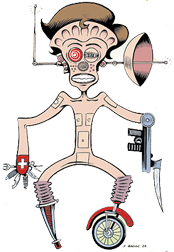 Reason Magazine recently conducted a debate on the the promise, perils, and ethics of human enhancement. The panelists included Ronald Bailey, Reason’s science correspondent and author of Liberation Biology: The Scientific and Moral Case for the Biotech Revolution, Eric Cohen, director of the Ethics and Public Policy Center’s Biotechnology and American Democracy Program and editor of the group’s journal, The New Atlantis; and Joel Garreau, a reporter and editor for The Washington Post and author of Radical Evolution: The Promise and Peril of Enhancing Our Minds, Our Bodies, and What It Means To Be Human. The debate was moderated by Reason Editor in Chief, Nick Gillespie.
Reason Magazine recently conducted a debate on the the promise, perils, and ethics of human enhancement. The panelists included Ronald Bailey, Reason’s science correspondent and author of Liberation Biology: The Scientific and Moral Case for the Biotech Revolution, Eric Cohen, director of the Ethics and Public Policy Center’s Biotechnology and American Democracy Program and editor of the group’s journal, The New Atlantis; and Joel Garreau, a reporter and editor for The Washington Post and author of Radical Evolution: The Promise and Peril of Enhancing Our Minds, Our Bodies, and What It Means To Be Human. The debate was moderated by Reason Editor in Chief, Nick Gillespie.Nick Gillespie's intro to the debate:
Nick Gillespie: Our purpose tonight is to hash out questions and issues revolving around human enhancement based on technologies that include cloning; stem-cell research; processes to increase longevity, intelligence, and physical abilities; and many other procedures at various stages of development. What was once the province of science fiction—human beings augmented to such a degree that they become “post-human”—is rapidly becoming fact. Indeed, one of our panelists tonight will even argue that within the next century death itself may become optional. These are the sorts of developments that fill some with hope and others with horror.The entire transcript of the debate can be found here, or also in MP3 format.
Our panelists tonight will not agree on very much, but on this basic point I suspect they’re in complete agreement: Forget all the talk about Social Security solvency, income tax rates, blue states, red states, even the war in Iraq. The most fundamental social and political issue facing the world today—and tomorrow—is the question of human enhancement.
Tags: Transhumanism, Bioethics, Biotechnology.
January 8, 2006
January 6, 2006
Mike Treder on...
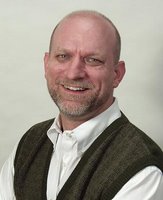 Friend and fellow transhumanist Mike Treder has launched his new blog, Mike Treder on... His blog description reads, "Various and sundry topics: sometimes serious, but often not; often political, sometimes not; sometimes provocative, usually not; usually humble, occasionally not; but always me."
Friend and fellow transhumanist Mike Treder has launched his new blog, Mike Treder on... His blog description reads, "Various and sundry topics: sometimes serious, but often not; often political, sometimes not; sometimes provocative, usually not; usually humble, occasionally not; but always me."Mike also does work in nanotechnology foresight for CRN.
Albert Harrison: After Contact: The Human Response to ET Life
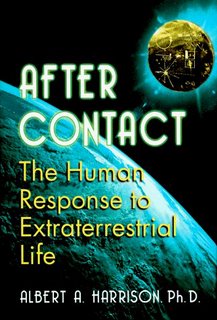 After Contact: The Human Response to Extraterrestrial Life (October, 1997)
After Contact: The Human Response to Extraterrestrial Life (October, 1997)by Albert A. Harrison
Hardcover: 363 pages
Publisher: Plenum Publishing Corporation
Language: English
ISBN: 0306456214
Review excerpt by: John Alexander, Ph.D., National Institute for Discovery Science, Las Vegas, NV:
In After Contact Professor Al Harrison of the University of California-Davis ...examines the human consequences of contact with...an intelligent extraterrestrial entity. Except for fictional accounts, no one previously has explored as comprehensively the many ramifications such contact would pose for those of us who live in what we believe to be technologically advanced societies. Just what would happen if we learned that we were not at the top of the evolutionary pyramid?Entire review.
Harrison first lays out the background information surrounding current search methodologies used by SETI and their radio-telescopic efforts to listen for signs of life. He also covers the supporting probabilities that mathematically suggest that some form of extraterrestrial life should exist elsewhere in the universe. It is not just in independent evolution of ETI on some far distant planet that life could exist, but also through a seeding or colonization effort. The search for ETI, he argues, requires a broad multidisciplinary approach. The complexities of communication should contact be established demand that a wide variety of sciences would be necessary including biologists, physicists, chemists, computer scientists and linguists just to name a few. Harrison states that while there is no compelling evidence that we have been visited by an ETI, there are sufficient clues to make exploration worthwhile. Further, the enormity of the impact on society dictates that these are prudent steps.
In an overview of popular literature regarding UFOs and other aerial phenomena, he demonstrates a breadth of understanding of the material widely available to the general public. This is an important addition as it provides the background from which people are making decisions about their beliefs in ETI and probability of contact. It also shows why there is a dramatic disconnect between the general population and most mainstream scientists.
Tags: Fermi Paradox, Life on Other Planets, Astrobiology.
Doug Vakoch: Reacting to disaster
[via Gravity Lens] SETI's Doug Vakoch contemplates the 'human factor' when dealing with catastrophic risks like NEO impacts:
Tags: Disasters, Near Earth Objects, Catastrophe, Existential Risks.
"...if natural human reactions to threats interfere, the ending could be far from uplifting. If fear and denial postpone an adequate response, dust and debris could make the daytime sky look like night, the Earth’s surface could be razed by a global firestorm, and tsunamis could obliterate coastal cities.Entire article.
In theory, threats from space may be detected far in advance of their arrival, giving plenty of time to deflect them or at least prepare for the aftermath. But that’s in theory. "What we may actually get," says psychologist Albert Harrison, "is an obsessive focus on a very constricted range of options, a refusal to consider or integrate new data, defensiveness that prevents decision makers from appreciating threats and developing alternatives, and panicky, ineffective last-minute choices."
The result would be devastating. "In some respects," Harrison suggests, "post-impact Earth may resemble an off-world destination: a dangerous place bombarded with harmful forms of radiation, a toxic atmosphere, and little or no useful vegetation." If some part of humanity survives, its future may be bleak. In the case of extreme destruction, Harrison says, "hopes generated by looking forward to emerging from shelter will be overpowered by the realities of living on a dead and barren planet."
Tags: Disasters, Near Earth Objects, Catastrophe, Existential Risks.
Subscribe to:
Posts (Atom)



